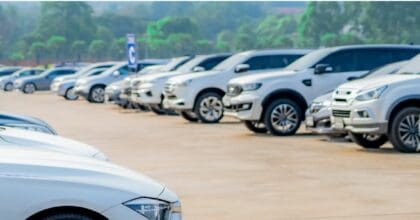In the past three months, the COVID-19 pandemic has led to many changes in China’s auto industry in terms of sales and marketing. Auto brands have pivoted to host new car launches and press conferences online in order to engage with customers during the crisis. It is obvious that online marketing will become increasingly important for auto brands even after the COVID-19 pandemic is over. Here, we explore three dimensions of conducting online marketing in the auto industry including influencers (or Key Opinion Leaders (KOLs) as they are referred to in China), product understanding, and communication channels.
Key Opinion Leaders and influence
Live streaming is a very popular in China right now. KOL Li Jiaqi promoted the Cadillac CT4 via live stream and it is said other auto brands have tried to reach Luo Yonghao about selling cars via his live stream campaigns. However, the live stream events did not work out very well; there were zero sales of Cadillac CT4 after Li Jiaqing’s live stream. It seems consumers are inclined to buy Dior during a live stream, but not Audi.
Mintel research about automotive influencers in China shows that customers would prefer to have online engagement with auto industry KOLs instead of being educated by brands about specific cars. Chinese microblogging site Weibo attracts the younger generation as it provides better engagement and interaction functionality for users. According to Mintel research, car owners and potential customers born in the 1970s and 1980s prefer to search for product information on social media platform WeChat, while those born in the 1990s prefer Weibo. The biggest difference between WeChat and Weibo is that WeChat only allows the brand to respond to consumer comments/questions, while Weibo allows brands and all followers to interact with each other. This tells us that younger generations are more open to discussions, while older generations prefer to only interact and share with their close friends or families.
For auto brands, the lack of sales resulting from the live stream events is not the point as the real objective of live streaming is to leverage KOL influence over more potential customers well after the actual live stream event ends. It offers brands a new way for customers and prospects to understand their products; remove potential barriers for viewing the car and interacting with a brand, compared to visiting a confusing retailer website or traveling to a dealership in person. Delivering the right content in an interesting way and offering opportunities for interaction are key to successful live streaming.
360-degree understanding of the product
In 2017, Infiniti invited several auto industry KOLs to conduct a 10-hour live stream of the disassembly of a car. Through the dismantling, Infiniti showed consumers the excellent craftsmanship of the car, resulting in huge brand exposure.
A third of Chinese consumers say they first consider the energy and fuel efficiency and model of a car during the car purchase process, and only a quarter first consider the brand. This indicates that consumers tend to be rational, and an in-depth understanding of the product itself is the most important part of the purchase process.
Dealerships cannot dismantle cars in-person while consumers watch – it’s not practical and does not have the same effect as a live stream event. Although the Infiniti case study is now three years old, it still resonates as a good example of how auto brands can leverage KOL engagement as consumers are more eager now than ever for campaigns that allow them to better understand car safety features and service life.
Online channels merge with offline
In order to promote the latest X2 model, BMW launched a renovation marketing campaign with Tencent News in Nov. 2019. BMW put fluorescent green signs and price tags around a grocery market in Beijing’s Sanyanli neighborhood, making it an instantly-recognizable landmark, earning the title “most fashionable grocery market.”
At the same time, BMW created the hashtag “Sanyuanli V.S Sanlitun” on Weibo to spur competition between Sanyanli and Sanlitun – a Beijing neighborhood known for its fashionable dining and nightlife scene – which attracted more than 120 million hits.
This marketing campaign showcases how BMW re-strategized some of its product positioning to incorporate more than its standard high-end luxury and pure driving experience messaging. Many customers complain that the 2020 BMW 3 series feels too comfortable in its suspension and driving and not sporty enough. The truth is that BMW did this on purpose. It encourages customers to buy the M series for sporty driving pleasure and the 5 series or 7 for luxury. The X2 and 3 series are built more for the younger generation in order to increase its market share and expand its brand influence over a wider range of target audiences.
The takeaway from this is that online auto marketing needs to be incorporated with offline operations, especially now when COVID-19 is still impacting everyday life in China. Offline marketing campaigns can increase brand awareness online and relieve customers’ anxiety caused by the pandemic from the past several months.



































